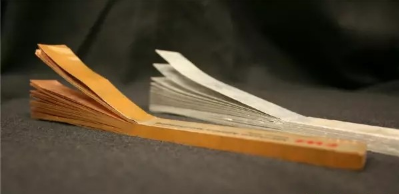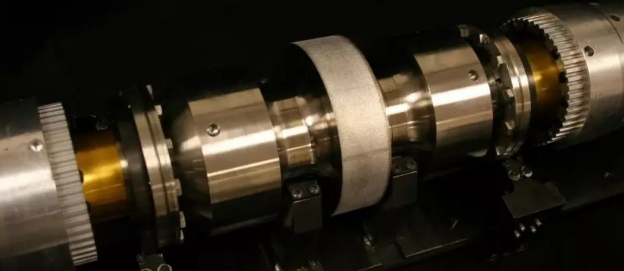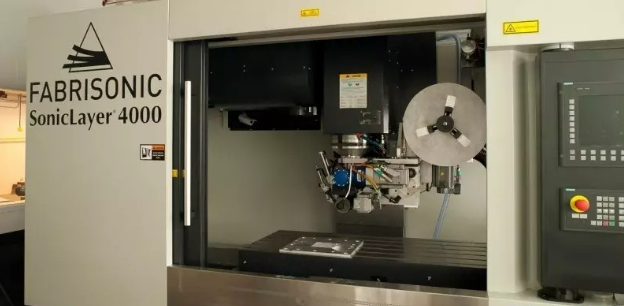
Privacy statement: Your privacy is very important to Us. Our company promises not to disclose your personal information to any external company with out your explicit permission.
Today to bring you 3D printing technology is ultrasonic additive manufacturing ultrasonic welding of metal (Ultrasonic Additive Manufacturing) based short UAM. In the field of metal 3D printing , powder bed melt forming (PBF) occupies half of the country, and the manufacturing advantages of UAM technology can not be replaced by any other metal 3D printing technology.
1. UAM technology development history
The application of ultrasound in industrial manufacturing began in the 1940s. As one of the forms of mechanical energy transfer, ultrasonic was mainly used for the forming and welding of thermoplastic materials (PVC, ABS, etc.). The thermoplastic material is completely melted under the action of ultrasonic energy during the welding process to fill the weld. Ultrasonic was applied to the cutting, forming and welding of metal materials in the 1970s. Due to the generally high melting point of metals, most metals are completely in a solid state during the welding process, so metal ultrasonic welding is also called solid state welding. However, in the welding technology at the time, the welding interface was limited to point contact or line contact, and the surface ultrasonic welding of the metal was not yet available.

With the rise of the concept of 3D printing in the late 1980s, ultrasonic 3D printing based on surface soldering came into being. In 1999, Dawn White, a professor at the University of Michigan, converted years of research into ultrasonic welding into patents and established the company Solidica Inc to commercialize ultrasonic 3D printing technology. In 2001, Solidica released the first generation of ultrasonic 3D printers . At that time, the machine could only be used for aluminum alloy additive manufacturing, but soon with the update of technology, especially the experiments and development of a large number of universities and research institute users, UAM manufacturing The material is extended to dozens of alloys such as copper, nickel, and titanium. In 2004, Solidica released its second generation printer, Formation.
In 2007, the Edison Welding Institute (EWI, a non-profit engineering and technology organization dedicated to the development, testing and implementation of advanced manufacturing technologies in the industry) and Solidica began working together to develop more efficient ultrasonic 3D printing materials . Then in 2011, EWI and Solidica jointly established Fabrionic and further developed the technology to commercialize the improved ultrasonic additive manufacturing process and is currently the only company to use the technology. Founder and CEO Mark Norfolk graduated from Ohio State University with a degree in Welding Engineering and led the development of UAM technology in EWI before starting the company. The current Fabrisonic company is located in a 15,000-square-foot facility on the Ohio State University campus and works with the university.

▲Mark Norfolk
Today, UAM applications are exponentially developed and are widely used in buried sensors and reinforced or memory alloy fibers, in the manufacture of metal matrix composites, in the manufacture of functionally laminated materials, and the like.
Recently, the US company Fabrisonic has introduced industrial-grade metal 3D printers based on UAM technology: SonicLayer 4000 and 7200. This is a technique that combines traditional material reduction with additive material, that is, the metal foil placed by ultrasonic welding layer is used to obtain a rough shape (3D printing additive process), and then cut by a milling machine (conventional material reduction process). To get the final part. Last March, they upgraded the UAM 3D printer to add another dimension to normal flat 3D printing: 3D printing on the cylinder surface. That is, the metal layer is welded to the surface of the cylindrical shaped part by an ultrasonic additive manufacturing process. This process will primarily be applied to the addition of precious metal layers or other metallic features to the outer surfaces of various cylindrical parts, shafts, and tubes.

In recent years, Fabrisonic has been developing the materials needed for UAM 3D printing. In December 2016, Fabrisonic claimed that its metal materials using the ultrasonic 3D printing process had tensile strengths that were partially steel, but weighed in the same amount as aluminum. This is good news for the aerospace industry, which is sensitive to weight.
Although Fabrisonic was established in 2011, it has begun to provide services for customers such as NASA and Boeing, supplying printing services for materials such as tantalum, rare earth, titanium and tungsten. In 2016, NASA Langley Research Center teamed up with Fabrisonic to embed sensors into metal parts using UAM 3D printers to monitor parts temperature and speed for long periods of time. Now Fabrionic is now more likely to earn revenue through print services rather than selling devices.

▲Fabrisonic Ultrasonic 3D Printer - SonicLayer 4000
October 10, 2024
October 09, 2024
February 18, 2024
November 23, 2023
November 23, 2023
E-posta denna leverantör
October 10, 2024
October 09, 2024
February 18, 2024
November 23, 2023
November 23, 2023

Privacy statement: Your privacy is very important to Us. Our company promises not to disclose your personal information to any external company with out your explicit permission.

Fill in more information so that we can get in touch with you faster
Privacy statement: Your privacy is very important to Us. Our company promises not to disclose your personal information to any external company with out your explicit permission.